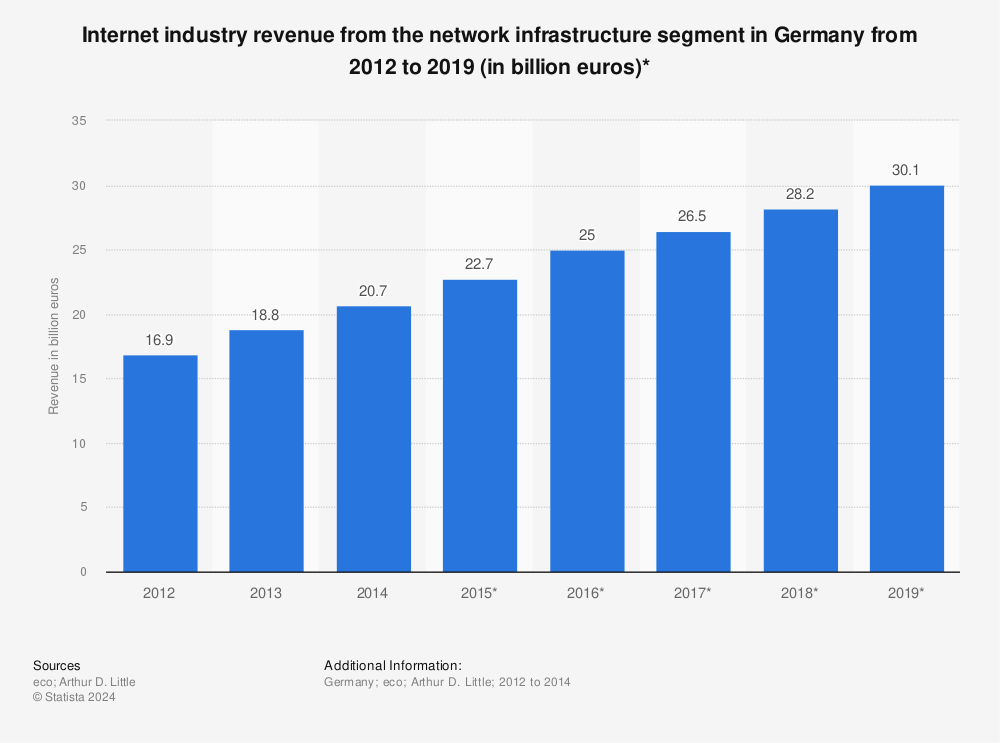In today’s world, it is absolutely essential that we remain connected. The internet drives the vast proportion of our interactions, whether these are business, organizational or personal. We use the web for entertainment, whether gaming or streaming movies; we use it to work remotely and to deliver products to clients; and we use it for banking and countless other sensitive and critical activities.
It should be no surprise then that the network infrastructure market is booming and that this is expected to continue for a long time moving forward.
The network infrastructure market covers the entire gamut of network services that are offered by service providers, product manufacturers and more. This includes everything from the development of routers, hubs and servers, to the creation and maintenance of huge data towers.
This is a huge market and one that nearly everyone relies on heavily on a day-to-day basis. Most of us won’t go through the day without checking the internet in some form or other at least 10 or 20 times. Many of us work in roles that require a constant internet connection. And for entertainment, we broadly stream movies, games or other media to our connected devices. Even communication is now reliant on a strong signal and connection.
It should come as no surprise then to learn that the network infrastructure industry is booming and predicted to enjoy continued growth into the next decade. But what precisely does the network infrastructure market entail? How does it work? And how is it shaping our lives?
How Networks Works
A network is any series of connected devices which for most people will mean a number of computers, smartphones, games consoles and other ‘smart’ devices connected to a home wireless network. However, it could also mean a series of computers on a wired network as part of a business, it could mean a data provider’s entire 4G coverage.
Any device that is connected to a network that is capable of creating, transmitting or receiving information is called a ‘node’. These nodes include your computer, your printer, your smartphones and the router itself.
We call a wired connection of this type a LAN, which is a local area connection and as opposed to a WAN or Wide Area Network.
Most of us today use a WLAN, or a Wireless LAN. This means that the router itself is still connected via a cable to the internet, but it then transmits that signal wirelessly to all the devices on the home network.
A router’s job is to provide a single public IP address that will define the home network and then to transmit incoming and outgoing data between the private devices on that network – the other ‘nodes’. Your computers, phones, printers and other devices also have their own IP addresses, but these will change from time to time due to DHCP – dynamic host configuration protocol.
The wireless coverage is only for your home and for your private network, but it is the router itself which provides the ‘bridge’ to the wider internet that exists outside of that network and this still needs to be wired.
However, as you are probably aware, there are many more ways that you can connect to the internet. One of the most common examples of this is via mobile data. It is estimated that by 2023, the global 5G network (which designates that this is the 5th generation) will be worth $28 billion. 5G data will be faster and more efficient than the 4G and 3G that went before it.
But where does this connection come from? Right now, most phones rely on 3G, which itself is evolved from 2G, which in turn comes from GSM.
GSM stands for Global System for Mobile communications. While GSM dominates in markets such as Europe, it still only accounts for 70% of the global market. Other options include CDMA, iDEN, PDC and TDMA.
But in order for these networks to be distributed to their users, mobile providers need to erect large towers which effectively operate in a manner similar to a router. The network ‘coverage’ is defined by the number of towers in your region, their reach etc.

Find more statistics at Statista
Improving Network Coverage
As mentioned, the demand for network infrastructure is only increasing and many of the activities we take for granted today are entirely reliant on its existence. Companies that offer network connectivity can do so by providing these towers, as well as by providing wired connections to our routers.
The companies that can offer the fastest, most stable and most affordable networks for us to connect to will likely be the ones that get the majority of our patronage. And a big part of this for the mobile providers of the world will mean making the jump from 4G to 5G.
But what is the difference between 3, 4 and 5G anyway?
As mentioned, the G here stands for ‘generation’. In order for a network to be advertised as 3G, it needs to meet certain minimum specifications in terms of speed and reliability. It needs to offer peak data transfer speeds of 200 kilobits per second. To be advertised as 4G meanwhile, networks must be capable of offering 100 megabits per second and at least 1 gigabit per second for low mobility communication.
4G can come in a variety of forms with some being faster or more widely available than others. In the US, LTE, WiMAX and HSPA+ are all options. LTE is by far the most widely used however among most carriers.
Many future technologies will rely on this increase in speed and availability. In the future, it is likely that a lot of processing power will be outsourced to the cloud. That is to say that the devices you buy won’t have impressive internal specs but will rather stream processes handled on supercomputers located elsewhere. This would mean that the most powerful device could be tiny, consume barely any power and cost a fraction of the price of current handsets. For this dream to become a reality, we are reliant on the network infrastructure market!
